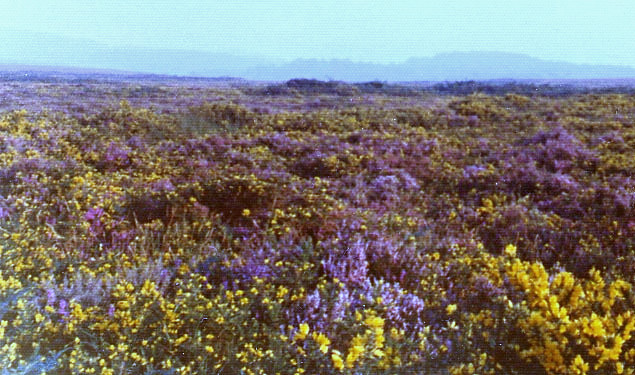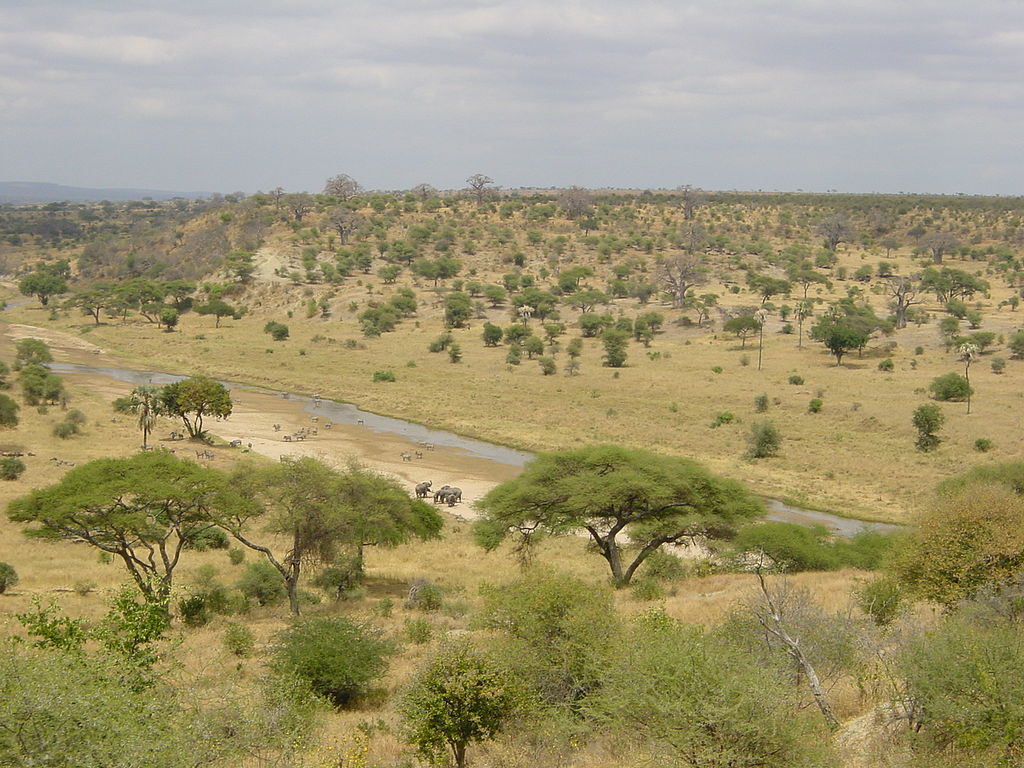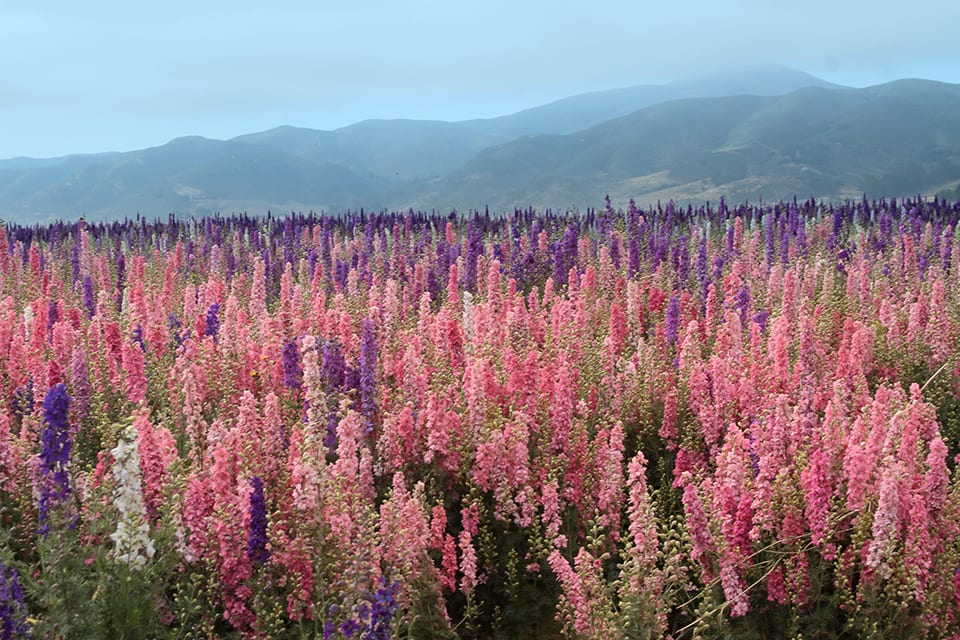 |
| Dantooine, old Dantooine |
Plains are wide-open regions with fairly abundant life, dominated by small area producers (grass, on Earth) and the grazers that feed on them. Because plains are so open, the things that live there are often highly mobile.Pulp stories set on plains tend to typically set themselves either on the prairies of the American Midwest, home to showdowns between horse-riding "Cowboys and Indians," while those set in more exotic locals tend to reach for the African Savannah, full of "bushmen" and exotic animals. However, plains present a difficulty for our purposes, not because they represent something so exotic, but because they represent something so mundane. Plains are the homelands of civilization, especially a particularly technological civilization. They offer prime real estate for roaming horseman tribes, for endless fields of grain and farms, and for starports. I can find you an interesting, exotic picture of every terrain type from an actual Star Wars movie except for plains, precisely because plains tend to be so civilized.
-GURPS Space, page 142
Why visit Plains?
Plains offer numerous advantages for any colonizers. They have plenty of resources (especially food!) and their flatness lends themselves well to construction. We expect to see farms, certainly, but a vast plain can also support cities, highways, airports, even starports! Most characters who land on a planet will end up on a plain at some point, whether that was their direct intention or not.
We wouldn't expect plains to necessarily foster exotic biologicals, as they lack the phenomenal biodiversity or jungles or islands, nor would they hide exotic minerals (though one can certainly find oil under plains, and the psi-wars parallel would be hyperium). Instead, we expect plains to be a galactic breadbasket, farming and herding to feed the rest of the galaxy. A hohum life that most adventurers will seek to escape rather than pursue.
Transportation is easy across plains, so easy that if a GM wants to create a survival scenario on the plains, he has his work cut out for him. Why would heroes ride horses across the vast plains when they could take a hover car? Why take a hover car when they can just fly from one airport to another? Why even bother, when you can just land directly from orbit near the location you want, get what you need, and then leave again? The GM has a few tricks he might use. The old crash landing can work (but why don't locals just send a rescue? Or capture the hero? Unless, perhaps, they're too primitive to just take a hover car over to see who crashed out there). Highly civilized land might rigorously defend itself, and sufficient anti-air defenses and planetary shields might force heroes to march in the long way (though this risks being less a survival scenario and more a war scenario). Finally, heavy storms might prevent characters from landing directly where they need to be, but if a planet is so wracked with storms that you have to carefully pick where you'll land, the ecology won't be a "plain" for long.
Your best bet for a plain-style survival scenario is to have external issues cause a crash over a primitive world full of as-of-yet unexploited plains and the characters need to find a way to contact civilization again. This gives the players a chance to interact with wandering nomads, giant herds of space beasts and the open weather of the plains.
Another possibility of a useful survival story might be a slow-burning revolution building on a low-tech planet covered in plains. Here, the Empire controls technology, but wandering bands of nomad aliens lumber across the great plains, and are too much trouble for an Imperial garrison to really pin down. Here, racing around in hovercars or starships would attract undue Imperial attention, but slipping into the nomad alien ranks will both hide the rebels and help them build support for a sudden insurgency against the Empire, once the time is right.
Your best bet for a plain-style survival scenario is to have external issues cause a crash over a primitive world full of as-of-yet unexploited plains and the characters need to find a way to contact civilization again. This gives the players a chance to interact with wandering nomads, giant herds of space beasts and the open weather of the plains.
Another possibility of a useful survival story might be a slow-burning revolution building on a low-tech planet covered in plains. Here, the Empire controls technology, but wandering bands of nomad aliens lumber across the great plains, and are too much trouble for an Imperial garrison to really pin down. Here, racing around in hovercars or starships would attract undue Imperial attention, but slipping into the nomad alien ranks will both hide the rebels and help them build support for a sudden insurgency against the Empire, once the time is right.
The Perils of the Plain
Cold flatlands are usually Arctic, while hot flatlands are usually Deserts, so a plain is typically neither particularly hot nor cold (though it might edge into one or another, but usually with less of a penalty than a desert or the arctic might inflict). Plains also rarely have unusual footing conditions: they might be uneven at times, or they might be slippery, but this is conditional. In general, there is no need for something like Terrain Adaption (Plains): arguably, humans (and many other animals, like horses and wolves) are already adapted for living on plains.
Weather on a plain can be torturous, though. Winds can reach pretty high intensities with nothing to break the up. Strong wind might offer a -1 tp -2 to combat, especially ranged combat. It might even be strong enough to strip topsoil off the land to create dust storms, inflicting a -2 to vision. Rain and even storms are pretty common on plains, with great, thundering clouds rolling in on the horizon. These can easily apply a -1 and -2 to vision, hearing and other rolls, and turn the ground to mud.
Specific hazards include
- Fires (DF16 32): Especially during summer months, dried grasses and lightning are a dangerous combination
- Lightning Strike (DF16 33) the flat environment and wild weather makes for a dangerous combination
- Stampede (DF16 33) Great herds of herbivores often make their home upon grasslands, grazing as they go.
- Stinging Plants (DF16 33-34) More of a nuisance than a problem on the plains, as opposed to the jungle.
- Swarm (DF16 34) Ants, bees and scorpions might be less common on a plain than elsewhere, one can certainly find irritating swarms out on the plain.
- Tornado (DF16 34) Most notorious on the plains, especially plains that run from the tropics to the arctics, like the American midwest. Usually represent the ultimate climax of a spectacularly bad weather roll.
Wonders of the Plain
When it comes to vegetation, broadly speaking, there are three sorts of plains. Grasslands feature grass. Huge, endless fields of rolling green (or, perhaps, brown) stretching all the way to the horizon. This includes lush, green, meadows (usually in areas of higher rainfall) and brown prairie or steppe (usually in places of more moderate rainfall, bordering on arid for steppe).
When we begin to mix grass, or replace it, with small bushes, tall herbs, or "scrub," we find ourselves in scrublands or heaths, often with patches of empty ground with small bits of herb and bush scattered about, usually reaching no higher than one's hip.
Finally, on the border between woodland and grassland we have savannah, which features trees scattered about the grassland, but not to close to one another that the canopy closes in and forms a true forest.
Plains might feature a river. The flat terrain tends to serve as a natural basin in which runoff can gather and the presence of so much water and humidity might well feed all the grasses around it. The river flows and turns often throughout the plain, we might have a scroll plain. If the river routinely overflows its banks to cover the land in rich silt, we have a spectacularly fertile flood plain. If the water consistently overflows the river to create long-term wetlands, we apply the term "flooded grasslands" or "flooded savannah," but then we have a swamp, which I'll discuss later.
Civilizations often tame a plain and make it produce useful crops. The most obvious example would be fields of crops, like the endless seas of grain visible in the American Midwest or the Pacific Northwest. Sometimes, though, grass is itself the crop, creating pasture land that livestock can roam and graze. These tend to be very common, for example, in Argentina, known for its cattle. Finally, sometimes the term "meadow" is used to describe a field allowed to overgrow for the production of hay. If the plains become too built up, of course, they become urbanized.
Humans interact with plains in other ways, often violently. Consider the relics of battlefields, or the barbaric conquests made by nomads riding across the steppe. Sometimes fields become sacred, holy or celebrated, like the poppy fields cultivated in the memory of the fallen of World War I.
Life shapes the plain (and is largely defined by it). Grasses vary in color from lawns of emerald green to waving gold, but alien grasses might have a different color (especially to deal with a different color of sun) and flowers can offer numerous palettes of additional color, from fields full of yellow daisies to a lavender heath. Animal life flourishes, too, on plains. Plains often feature the largest of animals collected in the greatest numbers. Herds of gigantic buffalo or mighty parades of elephants might dominate the local plain. Plains also tend to feature the sort of animals ripe for domestication, like horses or cattle. Thus, if a world has any large plains, those plains will likely be home to most of their memorable species.
When we begin to mix grass, or replace it, with small bushes, tall herbs, or "scrub," we find ourselves in scrublands or heaths, often with patches of empty ground with small bits of herb and bush scattered about, usually reaching no higher than one's hip.
Finally, on the border between woodland and grassland we have savannah, which features trees scattered about the grassland, but not to close to one another that the canopy closes in and forms a true forest.
Plains might feature a river. The flat terrain tends to serve as a natural basin in which runoff can gather and the presence of so much water and humidity might well feed all the grasses around it. The river flows and turns often throughout the plain, we might have a scroll plain. If the river routinely overflows its banks to cover the land in rich silt, we have a spectacularly fertile flood plain. If the water consistently overflows the river to create long-term wetlands, we apply the term "flooded grasslands" or "flooded savannah," but then we have a swamp, which I'll discuss later.
Civilizations often tame a plain and make it produce useful crops. The most obvious example would be fields of crops, like the endless seas of grain visible in the American Midwest or the Pacific Northwest. Sometimes, though, grass is itself the crop, creating pasture land that livestock can roam and graze. These tend to be very common, for example, in Argentina, known for its cattle. Finally, sometimes the term "meadow" is used to describe a field allowed to overgrow for the production of hay. If the plains become too built up, of course, they become urbanized.
Humans interact with plains in other ways, often violently. Consider the relics of battlefields, or the barbaric conquests made by nomads riding across the steppe. Sometimes fields become sacred, holy or celebrated, like the poppy fields cultivated in the memory of the fallen of World War I.
Life shapes the plain (and is largely defined by it). Grasses vary in color from lawns of emerald green to waving gold, but alien grasses might have a different color (especially to deal with a different color of sun) and flowers can offer numerous palettes of additional color, from fields full of yellow daisies to a lavender heath. Animal life flourishes, too, on plains. Plains often feature the largest of animals collected in the greatest numbers. Herds of gigantic buffalo or mighty parades of elephants might dominate the local plain. Plains also tend to feature the sort of animals ripe for domestication, like horses or cattle. Thus, if a world has any large plains, those plains will likely be home to most of their memorable species.
Technology of the Plain
People whose lives are dominated by the plain are unlikely to look particularly different from any other people. Things like roads, vehicular transport and urbanization are all exceptionally easy on a plain, and thus they're often home to civilization. Their weather and climate isn't generally intolerable, so they require no special technologies for humans (or humanoids) to thrive, as humans are a species that itself evolved on the savannah.
For a less technological people, mastery of the plain depends on mastery of its life, and an excellent sense of direction. They'll travel on the local equivalent of horseback if possible, or become excellent hikers, as most of the herds they hunt will necessarily wander to keep from overgrazing a single area. They'll learn the grasses and herbs and their uses, and they'll need to know the lay of the land very well despite the apparent lack of landmarks. They might not be as good at navigation as ocean-goers or desert-dwellers, but they'll be close.




No comments:
Post a Comment
Note: Only a member of this blog may post a comment.